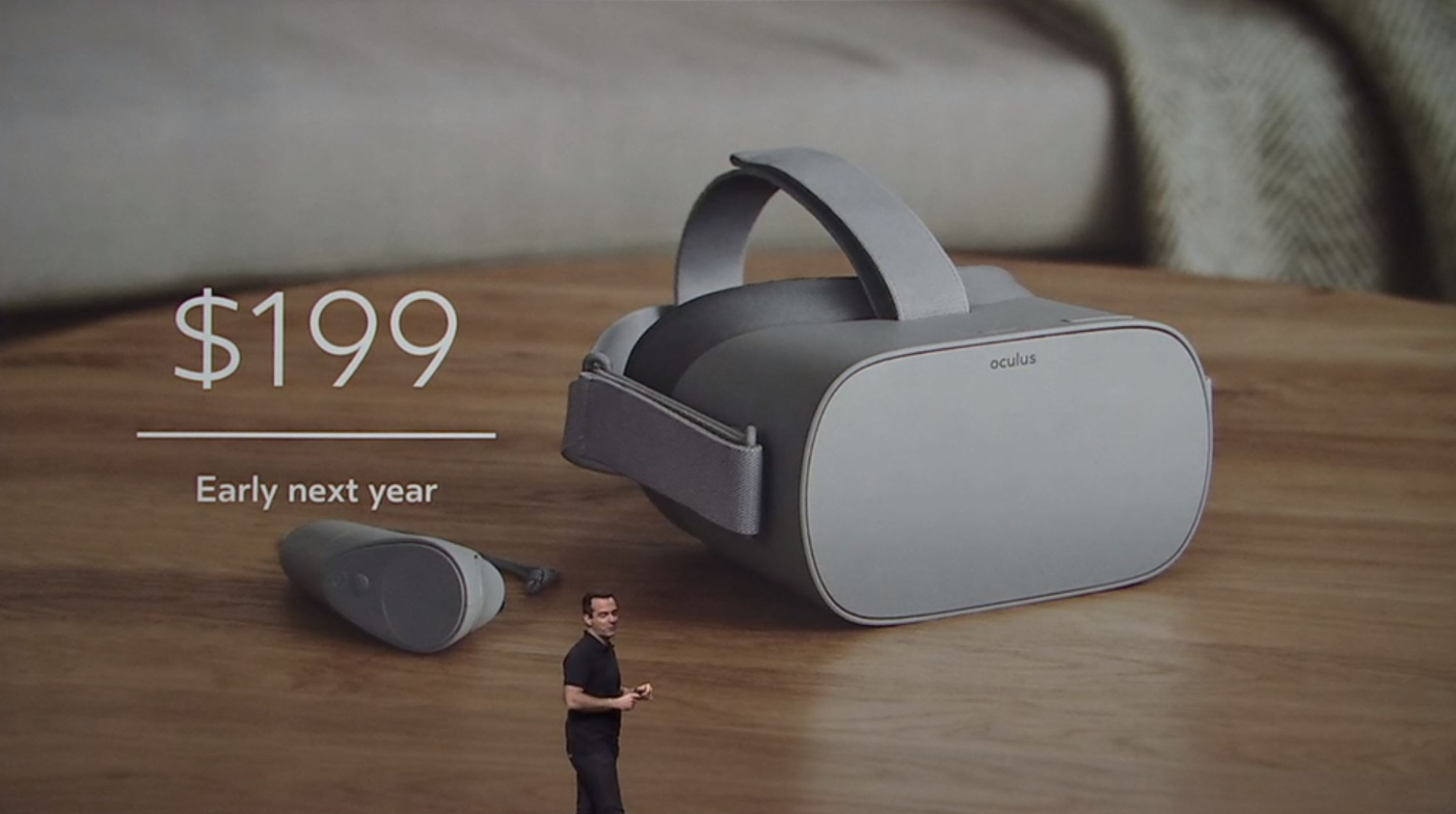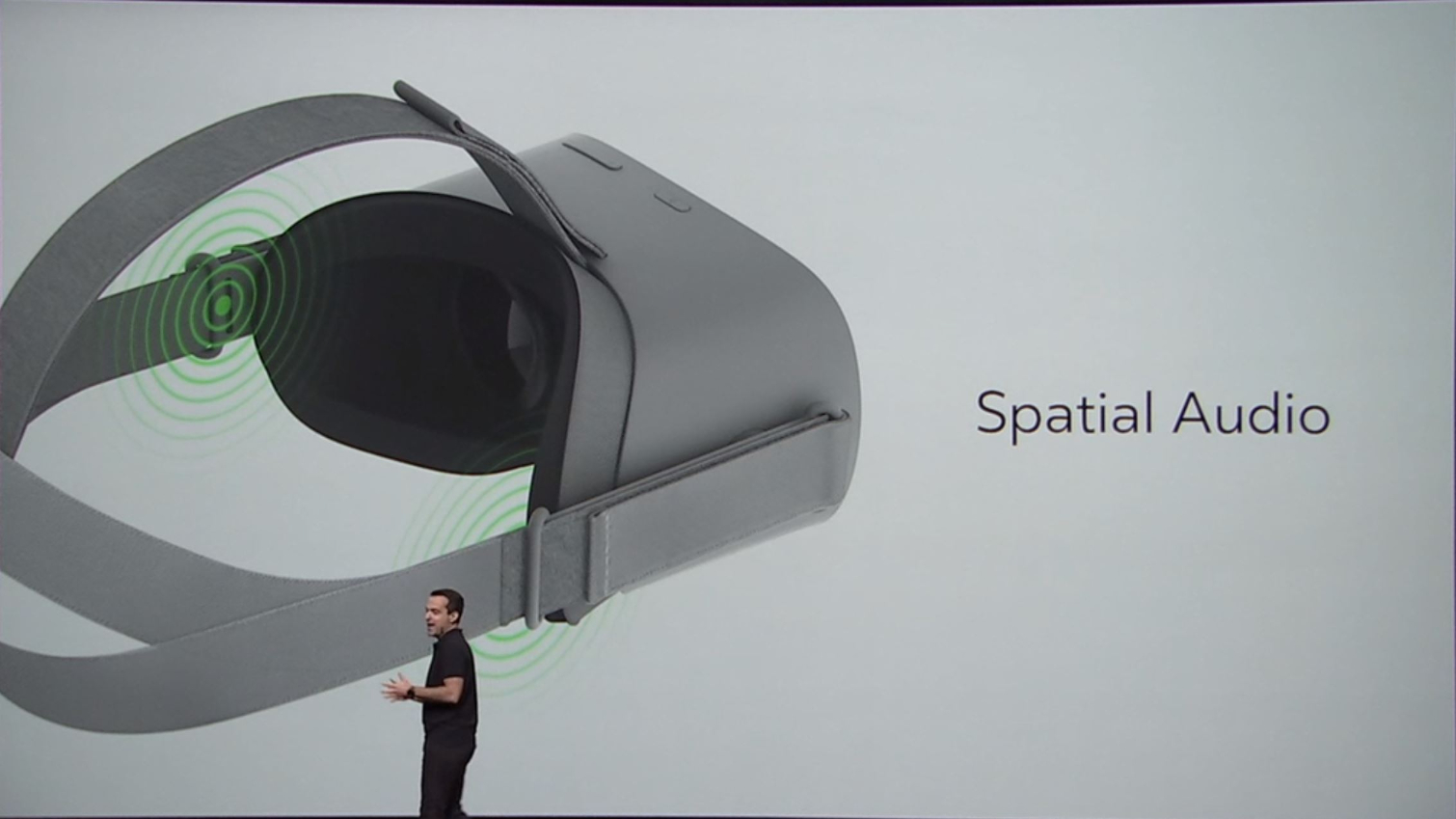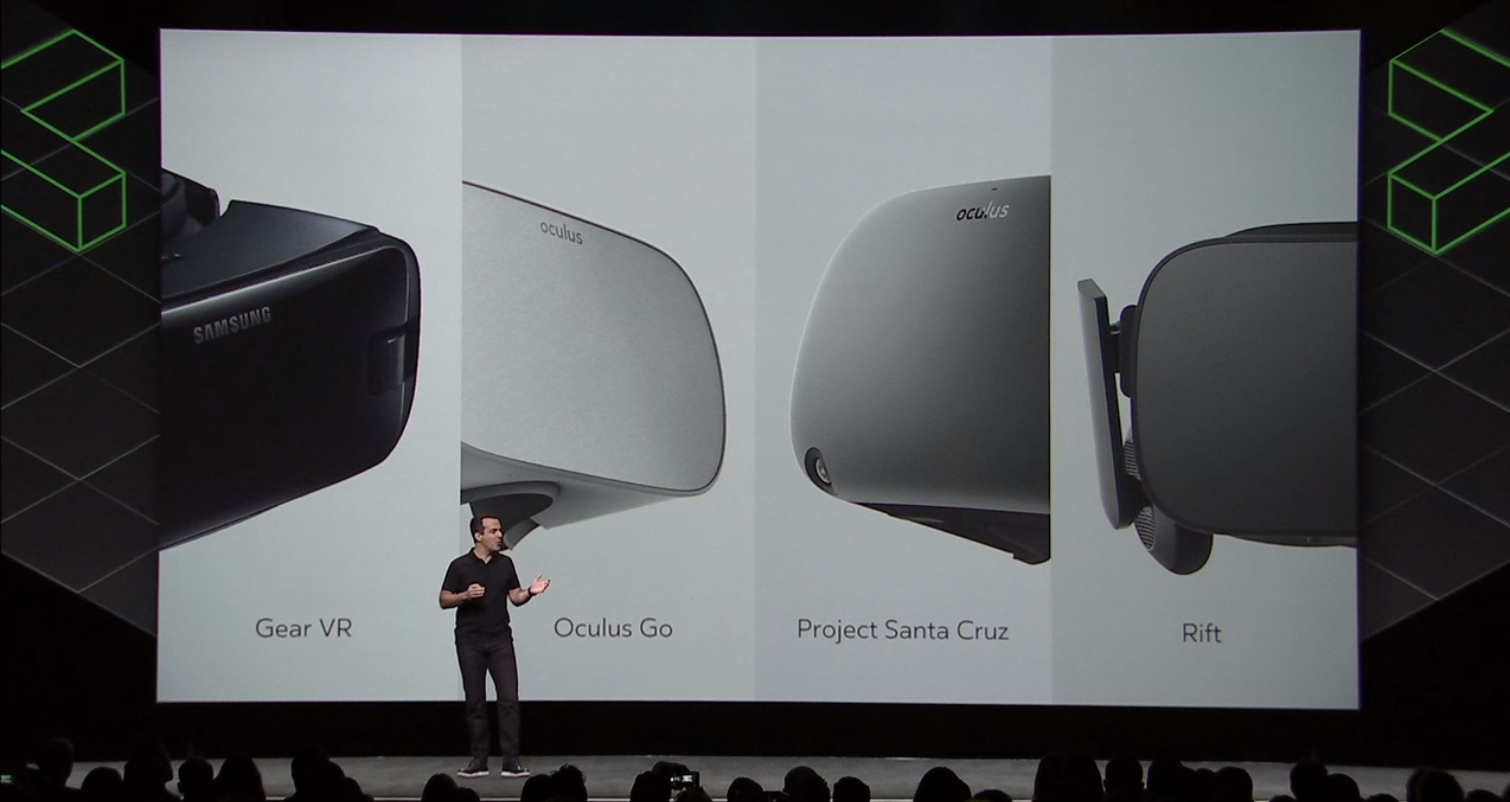Oculus Makes Aggressive Push For Standalone VR With Oculus Go, Santa Cruz HMDs
Oculus is making aggressive moves to bring standalone VR to the masses. The company announced not one, but two upcoming self-contained VR headsets at Oculus Connect 4.
Earlier this year, a report surfaced that suggested Oculus would enter the standalone VR headset market with an affordable, self-contained device that it would reveal at Oculus Connect. Oculus wouldn’t confirm that such a device exists, but ultimately it proved to be true.
Portable Mobile VR
During the opening keynote presentation of Oculus Connect 4, the company revealed Oculus Go, an affordable, lightweight, standalone headset for the masses. Oculus said the Oculus Go fits within the “sweet spot” between the Gear VR’s portability and the comfort of the Rift. The headset features a soft, breathable mesh fabric for the face cushion and soft elastic head straps.
The VR Go headset also features a new generation of Oculus-designed lenses that offer the same field of view as the lenses in the Rift headset, but with less lens flare distortion. The Oculus Go headset also includes an all-new fast-switch LCD, which reduces screen door effect and improves visual clarity compared to OLED displays.
The Oculus Go headset also features an integrated binaural audio system. Unlike the Rift, which includes speakers that are attached to the outside, the speakers in the Oculus Go headset are built right into the headset. The Oculus Go headset also offers a 3.5mm audio jack in case you prefer to use headphones.




Oculus said the Oculus Go headset is “binary compatible” with the Gear VR ecosystem. Every app that runs on the Gear VR will work with the Oculus Go, and vice versa. Developers that build for one platform are automatically supporting both systems. As such, it stands to reason that the Oculus Go headset would feature processing hardware derived from the mobile market.
Oculus didn’t reveal the internal workings of the headset, but we expect that we’ll find out that it is powered by a Qualcomm SoC. Qualcomm is a clear leader in mobile processing hardware for VR devices, and it offers multiple reference platforms for standalone VR devices. Oculus's competitors (Google and HTC) have already announced devices that use Qualcomm's Snapdragon 835 VR SoC.
Get Tom's Hardware's best news and in-depth reviews, straight to your inbox.
Oculus said it would begin shipping Oculus Go developer kits to developers in November. It didn’t give a concrete retail release date, but the company said it would start selling the headset to consumers in early 2018 for $199.
Untethered High-End Experience
The Oculus Go headset isn’t the first untethered VR device that Oculus showed off. Last year, at Oculus Connect 3, the company revealed an early prototype of an Oculus Rift with processing power built into it called Project Santa Cruz. Oculus had been adamant that Santa Cruz was just a prototype, but the company flipped the script today and revealed that Santa Cruz would, in fact, become a product that you can eventually buy.
Oculus revealed a new generation of Project Santa Cruz that takes that experience to the next level. Last year, Oculus showed off a standalone headset with no input method. This year, the company showed off Santa Cruz Controllers and headset that look ready for the mass market.
The new Santa Cruz headset features four ultra-wide field of view Constellation cameras that offer inside-out special tracking. Oculus positioned the integrated cameras on the front corners of the Santa Cruz headset. Two cameras point down to the front, and two cameras face up and to the front. The four cameras offer near-wraparound tracking, which enables you to wave the controllers behind your shoulder without losing the tracking.







The Santa Cruz controllers are similar to the Touch controllers, with a few key differences. The Touch controller features a halo ring with IR LEDs that wraps around your fingers. The Santa Cruz controllers also feature a halo ring with IR LEDs, but they are on the tops of the controllers, instead of wrapping around them. The new controllers also feature a touchpad, like the Gear VR controller, instead of a thumbstick.
Oculus did not reveal a price point for the Santa Cruz headset, and it didn’t commit to a time frame from the release, but the company said that developers would have access to the new platform some time next year.
Kevin Carbotte is a contributing writer for Tom's Hardware who primarily covers VR and AR hardware. He has been writing for us for more than four years.
-
bit_user So, Oculus Go is only 3-DoF? That's disappointing. IMO, they should've cost-reduced Santa Cruz and skipped Go.Reply
I wish Lenovo would hurry up and launch their 6-DoF standalone unit. Some competition might do that market segment some good.

